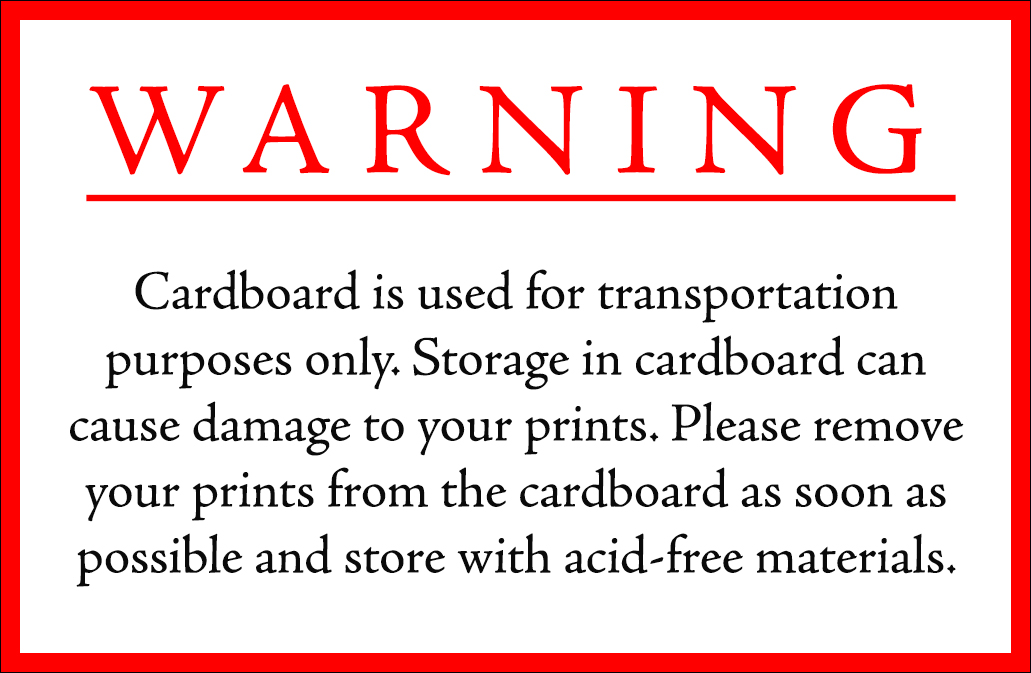Articles
Transportation, Storage, and Presentation of Giclees
Understanding the difference between packing a giclee print for transportation, storage or presentation is vital to preserving the life of your giclees. Packaging a giclee for transportation and packaging a giclee for storage can be two polar opposites. Packaging for storage and presentation can be very similar to one another.
The reason why packaging for transportation is a polar opposite from storage is because of the different materials involved. Prints may be shipped in a variety of packaging, but they must be stored using only acid free materials. It is less expensive to ship with readily available corrugated cardboard. It is more expensive to ship all of your prints in acid free materials, and also unnecessary as long as the prints are removed from the cardboard as soon as they have reached their destination.
Cardboard is acceptable to use as long as the print is removed from the cardboard as soon as it is shipped or transported. A print can only be in close quarters with cardboard for very short periods of time. Prints must be in a sealed bag or other protective barrier before bringing them into contact with cardboard. You cannot store prints in contact with cardboard and packing tape for extended periods of time or they will yellow from the acids.
This is a sticker we use on our packages and portfolios
Most packing tapes have adhesive that are not acid free and can cause severe yellowing in as soon as a week. This is true even if the prints are in a sealed bag. It would be a good idea when shipping your prints to clients to include a note about care instructions, as we do, so they are not damaged by your shipping materials.
Packing tape on the outside of your package is not bad. It’s when using packing tape on the inside of the package that you will see the yellowing of the paper occur rapidly. If you are taping bags shut you want to use “photo safe” scotch tape or acid free artist tape. The “photo safe” icon on the scotch tape indicates it is acid free and will not cause your prints to yellow under your bags. You can find the photo safe scotch tape at office supply stores or even Target. On the outside the package you can use regular packing tape.
When storing your prints, you will want to either keep them in metal flat files or use storage boxes, mat board or foam core that is clearly labeled acid free. Metal flat files will also protect from fires. Prints need to be kept in a cool, dark, dry environment. Boxes and flat files come in all sizes. You can find reasonably priced acid free storage boxes at Adorama or Archival Methods. Flat files are a much bigger investment, but they are the safest way to store your prints and original art. To save money, check your local classified listings for a used sets of flat files. If you are low on storage space or only have a few prints to store, you can store them between two pieces of acid free mat board or foam core. You can buy these in sheets at any art supply store.
When packaging for presentation, you will want to use acid free backing board with a clear plastic protective covering. This will make your prints easy to view and handle, as well as protect them from damage. You can back your prints with acid free foam core or mat board. You can get rolls of Acetate or use clear bags that will protect from fingers and air pollutants. Clearbags.com offers bags and artist presentation kits which include the backing board, bag, and mat.
Photo credit archivalmethods.com
Photo credit clearbags.com



